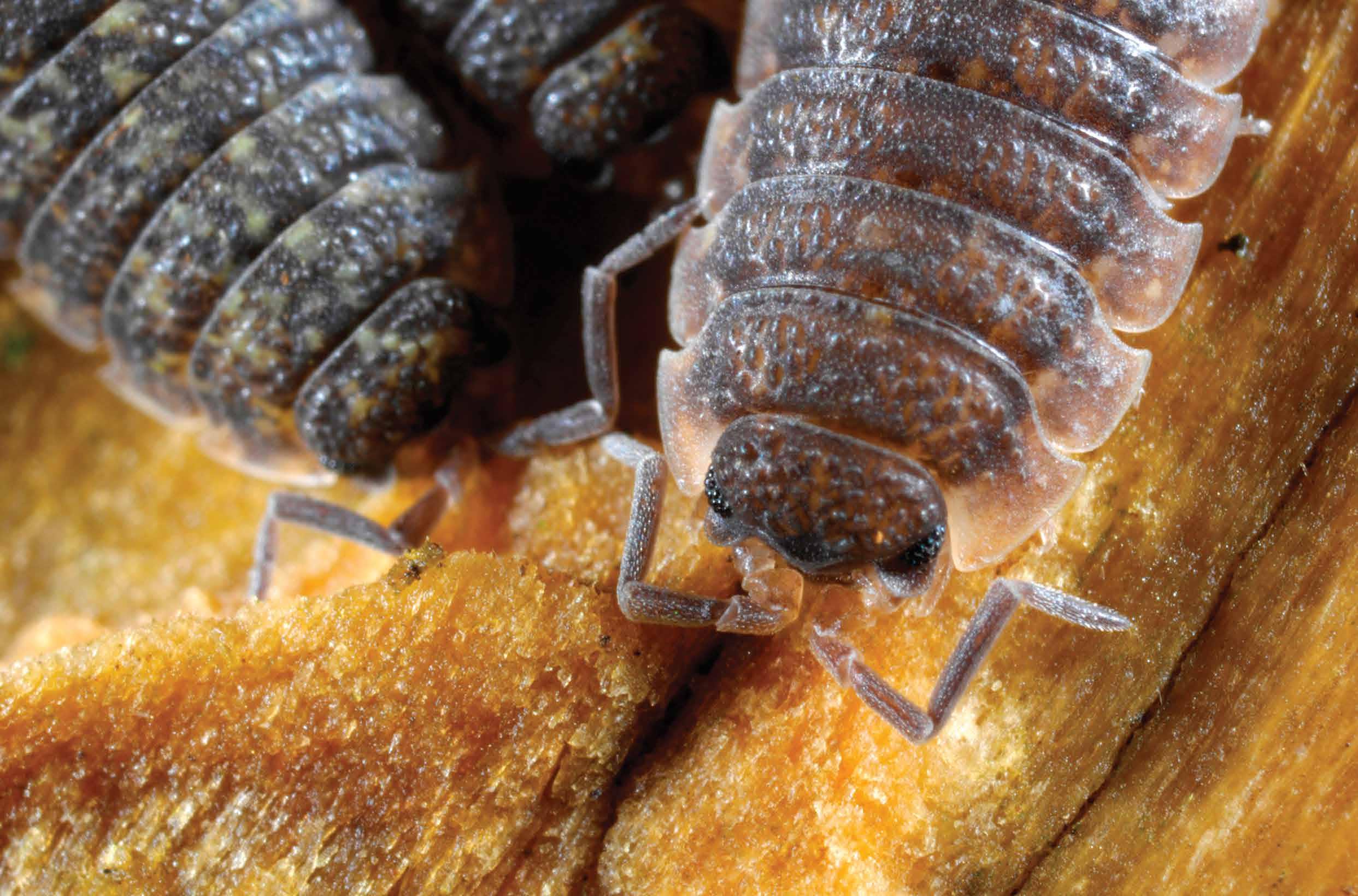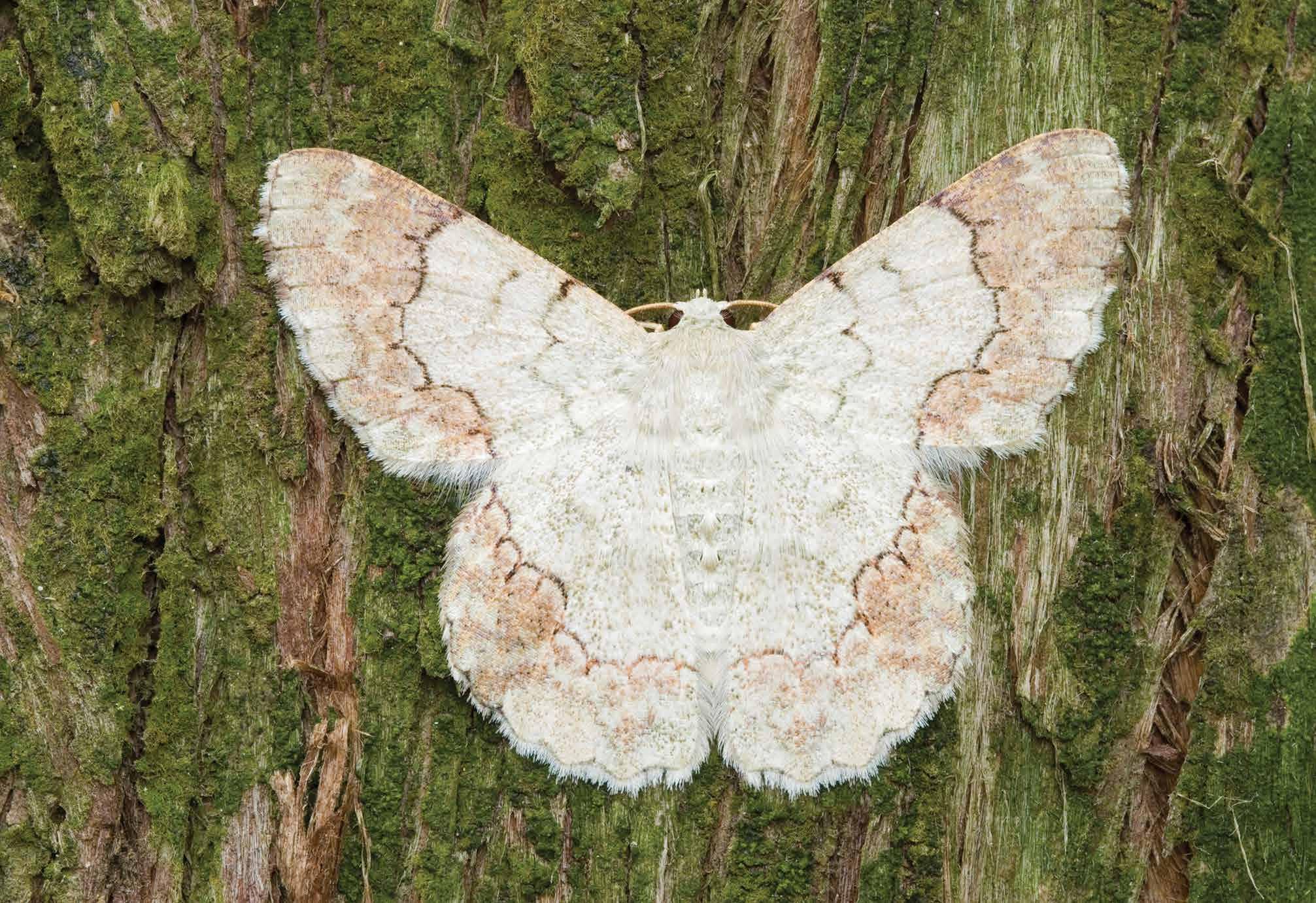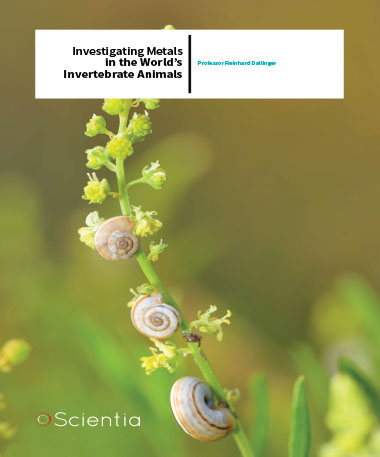Professor Reinhard Dallinger – Investigating Metals In The World’s Invertebrate Animals

Looking for Metals that Pollute Our World Today when one thinks about metals,
perhaps it’s in the context of the perilous economic environment the world has been ‘enjoying’ lately. Converting pounds, dollars or euros into gold, silver or other precious metals may be an investment strategy that makes sense – metals, not potentially worthless paper. Of course, medical and health conscious individuals more likely think of metals such as iron to prevent anaemia or calcium to strengthen bones. Those metals – along with zinc, copper, manganese and others – are necessary for proper tissue metabolism and health. But environmentally conscious folks are more likely to think of hazardous metals, such as lead, mercury or cadmium – metals resulting from human industry that contaminate our world and even cause human disease. The reason why this matters resides in the fact that normally solid metals as encountered in many metallic products are converted into ionic metal ions by atmospheric oxidation, thus becoming easily available to biota in the environment including marine, freshwater and terrestrial ecosystems. This is where Professor Reinhard Dallinger and his colleagues at the University of Innsbruck concentrate their efforts – utilising fundamental research techniques to characterise metal metabolism, regulation and detoxification in various organisms with ecological implications and combining that with applied research to make advances in various areas of ecotoxicology.
Metals, Metals Everywhere – Good, Bad and Ugly
One feature of metals is that they generally conduct electricity. Each time we turn on the lights, we’re using a metal – commonly copper – to conduct the electricity to the light bulb. But we also use metals unconsciously each time we take a breath of air. The red blood cells that carry oxygen from our lungs to our tissues use iron atoms present in haemoglobin molecules to carry oxygen throughout the body. Without enough iron, our blood cannot carry enough oxygen to sustain proper cellular functioning. Thus, although present in small amounts, these so-called essential metals are extremely important in bodily metabolic functions, both in humans and in other animals. They can become toxic, however, if their concentrations in biota exceed tolerable levels. But just as there are beneficial, even vital, metals that participate in our biology, there are also metals in our environment that can be dangerous at even low concentrations, sometimes extremely so. They are called nonessential metals. One well-known example is the outbreak of so-called Minamata disease in Japan in the 1950s. Ultimately, over 2,000 people were affected with severe mercury poisoning due to industrial dumping of methyl-mercury compounds into Minamata Bay and the Shiranui Sea near the city of Minamata in Japan. Deaths, foetal malformations and severe neurological disease resulted from mercury poisoning before the contamination was identified and halted. Although mercury exists in nature in small amounts, exposure and absorption of large amounts cause severe effects. Even now, after widespread regulation against mercury contamination of the environment, pregnant women are advised against eating large ocean-going fish like shark, swordfish, king mackerel, or tilefish, due to higher than usual levels of mercury that may cause foetal malformations. Another metal contaminant that can cause significant environmental problems, as well as human disease, is cadmium. Although cadmium exists in the Earth’s crust in small amounts, on the order of between 0.1 and 0.5 parts per million, higher concentrations result from the mining of zinc ore. The use of cadmium in such processes as metal plating, plastic production and nickel-cadmium batteries can result in contamination of the environment with unnaturally high levels of cadmium. This can lead to human disease, including cancer. In fact, cadmium has been declared a human carcinogen by the International Agency for Research on Cancer, the US Environmental Protection Agency (EPA) and the European Chemical Agency. As far as we know, cadmium has no biological function, at least in higher organisms. However, since cadmium does exist in nature, it is logical that organisms have mechanisms to allow them to excrete cadmium that they happen to ingest or absorb. This mechanism is what Professor Dallinger and his colleagues study to find out how different organisms adapt and respond to exposure to otherwise toxic metals, and what the implications of these response mechanisms are from a physiological, biochemical and ecotoxicological perspective.
‘I try to connect questions of fundamental ecotoxicology with the fields of molecular physiology, biochemistry, evolutionary biology and ecology. In fact, I love to work at the interface between different disciplines and across different levels of biological organization – from molecular through cellular, organismic and ecosystemic.’

Working Across Disciplines and Levels of Organisation
Professor Dallinger tells Scientia that since his early days at university, he has been interested in a synthesis approach to his work, rather than a specialist approach. He has studied zoology, microbiology, geology and mineralogy, and he puts all of that knowledge into his work in ecotoxicology. He attempts to connect questions of fundamental ecotoxicology, particularly the understanding of mechanisms of ecotoxicity, with the fields of molecular physiology, biochemistry, evolutionary biology and ecology. He is driven to work at the interface between different disciplines – what he calls interdisciplinarity – and across different levels of biological organisation, from the molecular level through the cellular level to the organism and then the entire ecosystem. Although this may seem very ambitious, some of his published work in different fields may have begun to achieve this goal. At the same time, this kind of research offers Professor Dallinger the opportunity to connect fundamental science with actual real-life applications. As examples of this interdisciplinarity and cross-organisation approach in action, three of Professor Dallinger’s recent grants, funded by the Austrian Science Foundation, addressed certain metalbinding molecules – metallothioneins – in species of snails. In one study, Professor Dallinger and his colleagues looked at the molecular basis for stress response plasticity in cadmium-metallothionein genes of snails. In another study, they investigate cell-specific interactions of snail metallothionein. In yet another study, the team take a multi-disciplinary approach to the evolution of snail metallothioneins towards structural and functional metal selectivity. From molecular to cellular to evolutionary and across disciplines – this is how Professor Dallinger likes to attack his research topics.
Looking at the Big Picture
While Professor Dallinger’s work seems to focus on molecular functions – metals and molecules – he is really interested in something more global. Basically, he wants to know how animals can adapt to specific kinds of stressors in their environment – in this case, metals like cadmium or copper – by focusing on the mechanisms and evolutionary processes that make adaptation possible. He follows the function of specific enzyme and molecular systems to see how animals solve the problem of contamination by possibly toxic agents like cadmium. At the same time, he’s interested in the modulation and optimisation of these mechanisms through evolution on different time scales, including the phenomena of micro- and macroevolution. A good example may be the question about how metallothioneins may have evolved through different animal lineages from rather unspecific metal binding molecules towards highly metal-selective proteins. In one paper published in the journal BMC Biology, Professor Dallinger and his group looked at a specific mollusc species, the Roman snail, and its metallothionein molecules to understand how metallothioneins may have developed evolutionarily. They found two different isoforms of metallothioneins in the snail – one specific for cadmium and one specific for copper. Clearly, the snail had evolved to process the two metals differently, since copper is a beneficial metal used in various metabolic processes, while cadmium is toxic and must be excreted. After comparing these results with known metallothionein forms from other species, the team concluded that these metalspecific metallothionein forms might be regarded as prototypes of metallothionein families that evolved genuine metal-specificity within the animal kingdom. Diversification into these metallothionein forms may have been caused by gene duplication perhaps, followed by speciation and selection towards different needs for protecting copperdominated metabolic pathways from nonessential (and possibly toxic) cadmium. The mechanisms enabling these metallothioneins to be metal-specific could also be relevant for other metalloproteins from other species besides just molluscs.
Small Animals, Big Environmental Effect
Another focus of Professor Dallinger’s work has been studying the biochemical and cell-physiological mechanisms that govern the accumulation of metallic trace elements in various invertebrates and fish. By looking at the physiological and ecological aspects of metals as they travel through the ecosystem and are absorbed and excreted by these animals, he has expanded our knowledge and understanding of the importance of various invertebrate species for the trace element transfer in ecological habitats. He has also looked at the use of some representative species as biological indicators of metal contamination in the areas they inhabit. In one study published in the journal Oecologia, Professor Dallinger and his colleagues looked at lead and cadmium levels in a species of woodlouse around the environs of Innsbruck and detailed the distribution of the metals around the city. This gave them a picture of the directional spread of the metals from industrial sites where contamination occurred.
Professor Dallinger’s team has also focused on aspects of microevolution and adaptation of populations to contaminants, such as metals and pesticides, in combination with different man-made stressors. They found, for example, that a widespread species of moth that attacks apple trees split into different adaptable populations over small-scale areas, apparently due to selective pressure from the application of pesticides. Some of the populations actually acquired pesticide resistance. Another example of microevolutionary adaptation to environmental pollution was discovered in populations of the freshwater tubifex worm. Prior and recent metal pollution in some European river systems have caused tubifex populations to split into groups that differ with respect to their resistance to metal contamination. So, whether it’s worms, moths or molluscs, Professor Dallinger will follow the ecotoxicology trail wherever it leads and at whatever level necessary to expand our knowledge and understanding.

What’s Up for the Future?
Professor Dallinger tells Scientia that he ultimately wants to develop a solid overview on the history of evolutionary optimisation of stress response in a number of animal phyla. He is doing that by following the development of the metallothionein system in different species and getting down to the molecular level. In a paper, he and his colleagues recently submitted for publication, they report a nuclear magnetic resonance analysis of metallothionein forms from a species of littoral snail. They found that this snail’s metallothionein was constructed in three individual domains, each folding into a single well-defined threemetal cluster. This allowed the molecule to bind to either nine zinc or cadmium ions, three in each domain. They suspect that the expression of a three-domain metallothionein confers to the snail an evolutionary advantage in coping with cadmium contamination and adverse environmental conditions. This study illustrates Professor Dallinger’s dream – multidisciplinary experts from centres across Europe performing complex chemical analysis on molecular structures to address a question of evolutionary design. This is just what he has always wanted – his interdisciplinarity addressing the multi-levelled problems to obtain the big picture.
Meet the researcher

Professor Reinhard Dallinger
Institute of Zoology University of Innsbruck Innsbruck, Austria
Professor Reinhard Dallinger received his PhD from the Faculty of Natural Sciences at the University of Innsbruck in 1978, for a thesis involving ecophysiology research focusing on the copper metabolism of terrestrial isopods. After seeking further training in archaeology, aquaculture, ethnology and environmental physiology – including an expedition to Lake Tanganyika in Africa – he joined the faculty of the University of Innsbruck in 1997, where he is currently Professor of Ecotoxicology there. Professor Dallinger’s main research interests are directed towards studying the adaptation, response patterns and molecular reactions of animals towards stress factors, primarily factors caused by human effects on the environment. In particular, he focuses his attention on the study of invertebrates and their importance for trace element transfer in terrestrial and aquatic habitats and for the application of some key representative species as biological indicators in metal-contaminated environments. He feels that in this area there is a particular need to integrate fundamental and applied environmental research methods.
CONTACT
T: (+43) 512 507 51861
E: reinhard.dallinger@uibk.ac.at
W: https://www.uibk.ac.at/zoology/staff/dallinger/index.html.en
KEY COLLABORATORS
Dr Martina Höckner, University of Innsbruck
Dr Martin Dvorak, University of Innsbruck
Dr Reinhard Lackner, University of Innsbruck
Dr Michael Niederwanger, University of Innsbruck
Dr Veronika Pedrini-Martha, University of Innsbruck
Dr Raimund Schnegg, University of Innsbruck
Dr Peter E. Hunziker, University of Zurich
Dr Jeremias H.R. Kägi, University of Zurich
Dr Oliver Zerbe, University of Zurich
Dr Merce Capdevila, Autonomous University of Barcelona
Dr Óscar Palcios, Autonomous University of Barcelona
Dr Silvia Atrian, University of Barcelona
Dr Margit Egg, University of Innsbruck
Dr Stephen Stürzenbaum, King’s College London
Dr Annette deVaufleury, University of Franche-Compté
Dr Bernhard Lieb, University of Mainz Dr Herbert Lindner, Medical University of Innsbruck
Dr Ionan Marigomez, University of Bilbao
Dr Manuel Soto, University of Bilbao
FUNDING
Austrian Science Foundation
European Union
Austrian Academy of Sciences
Private companies
REFERENCES
Ò Palacios, A Pagani, S Pérez-Rafael, M Egg, M Höckner, A Brandstätter, M Capdevila, S Atrian, R Dallinger, Shaping mechanisms of metal specificity in a family of metazoan metallothioneins: evolutionary differentiation of mollusc metallothioneins, BMC Biology, 2011, 9, 4.
M Egg, M Höckner, A Brandstätter, D Schuler, R Dallinger, Structural and bioinformatic analysis of the Roman snail Cd-Metallothionein gene uncovers molecular adaptation towards plasticity in coping with multifarious environmental stress, Molecular Ecology, 2009, 18, 2426–2443.
C Sturmbauer, GB Opadiya, H Niederstätter, A Riedmann, R Dallinger, Mitochondrial DNA Reveals Cryptic Oligochaete Species Differing in Cadmium Resistance, Molecular Biology and Evolution, 1999, 16, 967–974.
R Dallinger, B Berger, S Birkel, Terrestrial isopods: useful biological indicators of urban metal pollution, Oecologia, 1992, 89, 32–41.

